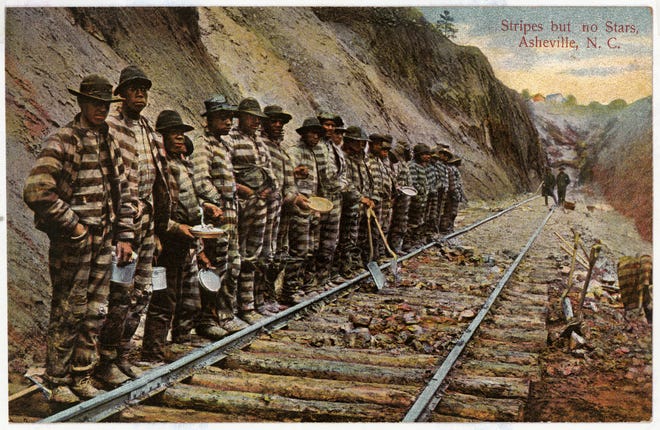Warren Wilson profs research local folk song, 'Swannanoa Tunnel,' discover untold history

BLACK MOUNTAIN - Kevin Kehrberg and Jeffrey Keith see the song “Swannanoa Tunnel” getting in the way of its own history.
In their article “Somebody Died, Babe: A Musical Cover-Up of Racism, Violence & Greed,” the Warren Wilson professors detail research into a local folk song that originated from Black laborers. This eight-year-long project discusses the origin of the song and its forgotten history thereafter.
The song was about the building of the railroad that ran through Western North Carolina and in particular, the long railroad tunnel east of Asheville.
At the beginning of their research, Keith said that the song’s story became something else.
“In one way I could say it was research like any other, but it wasn’t,” Keith said. “This story, even from the beginning, was very compelling and it started off feeling very personal, and then by the end, it became much bigger.”
Kehrberg, professor of music, and Keith, professor of global studies, decided to collaborate on a course after walking around Warren Wilson’s campus.
This course would focus on work songs, songs about work and how music became a form of work. They intended to discuss regional music, and “Swannanoa Tunnel” became another focus.
►Warren Wilson archaeology professor receives top award
During the course, the pair decided to continue researching the song’s origins, noting that it became more “complex, but also tragic” over time.
“It really became a wonderful course and I’ve since taught it by myself,” Kehrberg said. “And every time I do, this story, in particular, seems to impact students dramatically.”
“Swannanoa Tunnel,” recognized as a work song by Black laborers, would later be recorded several times throughout the 20th century by bluegrass, folk and old-time musicians, including Grammy Award-winner Bryan Sutton.
Keith and Kehrberg would later find the song recorded by Duke University’s William Love in 1939, the first known recording of the song by a Black performer.
Love also sang the song in its intended form while mimicking the beat of a hammer.
The finding of Love’s recording confirmed assumptions made by Kehrberg and Keith.
“It felt like it was a missing piece almost, that we had been looking for for a long time,” Keith said. “We knew about the origins of this song, yet strangely we didn’t have any recordings by Black performers.”
The article outlines the construction of the railroad and the loss of hundreds of Black laborers.
Zebulon Vance, former North Carolina governor, and James Wilson, president of the then-WNCR, urged for a 17-ton train be carried over a mountain by laborers to suggest a successful completion.
The story Kehrberg and Keith found illustrated the relationship and tension between history and memory, they said.
“For me as a musicologist, where the song comes in is it became a way that people understood that history,” Kehrberg said. “For decades, that understanding didn’t give the full picture, didn’t tell the whole story and the song played a role in that in the way that it was performed and presented.”
“But now we’re using that same song to tell the real story, and I think that’s where the music to me becomes magical because it’s such a simple thing.”
In the eight years working together, and after editing an initial 14,000-word article down to 7,000, Kehrberg and Keith realized the journey they started together.
“It came out of this place of a love-fueled curiosity for traditional music and, specifically, this song ‘Swannanoa Tunnel,’” Keith said. “Then at every turn, the song and its story surprised us, and it got more and more disturbing.”
The article, published Aug. 4, is featured on The Bitter Southerner’s website.